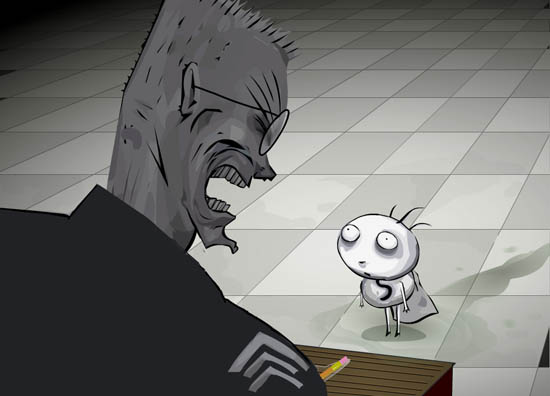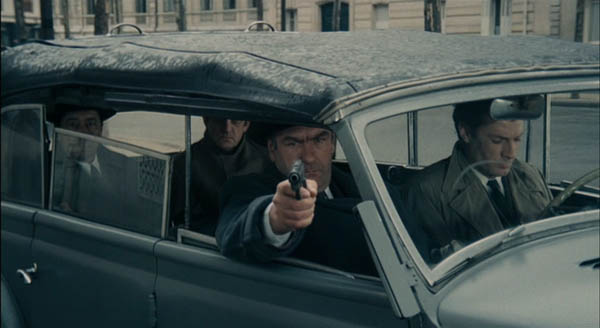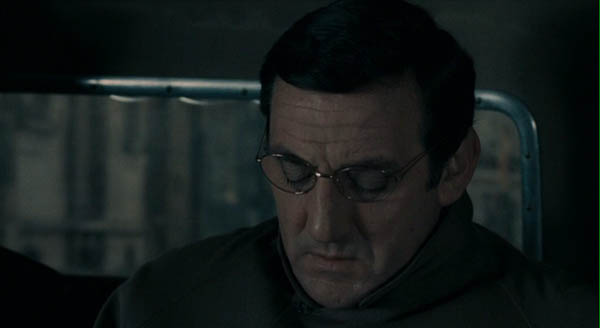Watched some of the earliest shorts I downloaded, over a year ago, and had never seen before.
The World of Stainboy (2000, Tim Burton)
Stainboy is a hero of sorts whose only power is creating stains. He takes on a giant darth bowling ball, a poisonous chemical hazard, a power-sucking robot, a girl with a hypnotic stare, and a match-prostitute, then in the final episode he flashes back to birth and the orphanage (where “boy with nails in his eyes” has a cameo). Pretty okay little show, short with funny bits.

Breakfast (1976, Michael Snow)
Decided not to watch it because the quality is too low. Don’t know how I’m going to see the Michael Snow films, but not like this.
Vibroboy (1994, Jan Kounen)
Loud, cartoonish, full of threatened sexual violence, feels like taking a beating or watching the Shelly and Leo home scenes from Twin Peaks for a half hour. Explorers spirit away ancient statue from Mexico, it’s entrusted to transvestite Francesca, who comes home to his trailer park to find his pet murdered and his neighbors Leon and Brigitte fighting. Leon is a violent shit, and threatens both “women”, ends up shooting F. (not fatally), breaking the statue, retrieving the metal dildo within and turning into Vibroboy, who just goes on beating the two girls but with the dildo now. Stylishly shot, but why film such a piece of shit story? Real disappointing because Kounen is someone I’d decided I was interested in before seeing any of his movies, so now I don’t know what to do about Dobermann and Blueberry. (Update: a Kounen fan advises to check out the uneven Blueberry and the doc on psychedelics and skip Dobermann)

Escargot de Venus (1975, Walerian Borowczyk)
Camera pans over color drawings of half-snail-half-women having sex with each other and themselves and various snaily men, while renfest flute music plays. Halfway in, a woman starts narrating in French, didn’t catch most of it except some of the dirty words. We actually see her flipping through the drawings, closes with her feeding a snail to an iguana. Nice, sexy images, liked it better than his DOM short. Internet says the woman is Bona Tibertelli De Pisis, and the drawings are hers.

L’Amour monstre de tous les temps (1977, Walerian Borowczyk)
Close-up on a painter at work, nicely edited with music by Richard Wagner. Final painting involved a beast and human nudity, so right up Walerian’s alley. A good one. Can’t find who the bearded painter was.

Lapis (1966, James Whitney)
finely detailed geometric images (points of light?) falling inwards and outwards to and from the center into infinity. Sound (indian music) didn’t play right on my copy, but when it did, it adds to the trance effect. Would be pretty awesome to see this in a theater. Apparently used motion-control camera (“analogue computer equipment”) and the circular shape is a mandala, “a Tibetan Buddhist spiritual meditation aid”. Director’s brother designed the motion-control for the title sequence of Vertigo!

Recreation (1956, Robert Breer)
extremely rapidly edited shots of objects on plain backgrounds, a little animation, some guy talking in French, FIN.

A Man And His Dog Out For Air (1957, Robert Breer)
flowing line drawing animation forming many abstract shapes but nothing quite recognizable until right before the end, when they form a man and his dog out for air. Neat.

























